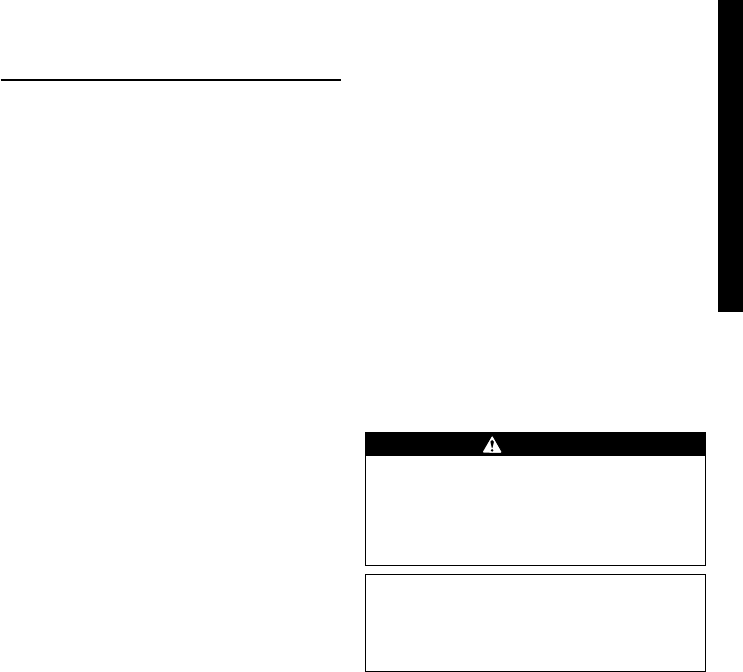
ENGLISH
FRANÇAISE
ESPAÑOL
9. EASY TROUBLESHOOTING
1. PUMP DOES NOT RUN .
Engine dose not start.
(See 9.-4 “4. WHEN ENGINE DOES NOT START
”)
Sticking of impeller
(Disassemble and clean.)
2. PUMPING VOLUME IS SMALL.
Sucking air at suction side.
(Check piping at suction side.)
Drop off engine output
(Consult your nearest dealer.)
Breakage of mechanical seal.
(Consult your nearest dealer.)
High suction lift (Lower.)
Suction hose is too long or thin.
(Use a thick hose in minimum length.)
Leak of water from water passage.
(Stop leaking.)
Clogging of foreign substance in impeller.
(Disassemble and clean.)
Wear of impeller.
Looseness of suction chamber. (Retighten)
Strainer is clogged. (Clean.)
Engine speed is too low.
(Consult your nearest dealer.)
3. PUMP DOES NOT SELFPRIME.
Suction of air at suction side.
(Check piping at suction side.)
Insufficient priming water inside pump casing
(Prime fully.)
Imperfect tightening of drain plug.
(Tighten the plugs completely.)
Engine speed is too low.
(Consult your nearest dealer.)
Sucking air from mechanical seal.
(Consult your nearest dealer.)
4. WHEN ENGINE DOES NOT START :
Perform the following checks before you take the pump to
your SUBARU Industrial Power Products dealer. If you still
have trouble after completing the checks, take the pump to
your nearest SUBARU Industrial Power Products dealer.
(1) Is there a strong spark across the electrode ?
Is the stop switch at position “ I ” (ON)?
Remove and inspect the spark plug.
If the electrode is fouled, clean or replace it with new
one.
Remove the spark plug and connect it to the plug cap.
Pull the starter handle while grounding spark plug against
engine body. Try with a new spark plug if the spark is
weak or there is no spark.
The ignition system is faulty if there is no spark with a
new spark plug.
Wipe out spilled fuel carefully before testing.
Place spark plug as far away from spark plug
hole as possible.
Do not hold spark plug by hand while pulling
recoil starter.
WARNING
NOTE
The engine with oil sensor will stop automatically when
the oil level falls below the prescribed limit.
Unless the oil level is raised above the prescribed limit,
the engine will stop immediately after starting.
(3) Is the spark plug wet with gasoline?
Is the fuel valve opened?
Choke (close choke lever) and pull the starter handle five
or six times. Remove the plug and check if its electrode
is wet. If the electrode is wet, fuel is well supplied to your
engine.
When the electrode is dry, check where the fuel stops.
(Check the fuel intake of the carburetor.)
In case the engine does not start with well supplied fuel,
try using fresh fuel.
Pull the starter handle slowly and check if resistance is
felt. If little force is required to pull the starter handle,
check if the spark plug is tightened firmly. If the spark
plug is loose, tighten it.
(2) Is there enough compression?
12.4.6, 9:23 AMPage 11


















